Explore the unseen nature of Chernobyl with photographer Edward Thompson
Dr Thom Davies, Research Fellow at the Department of Sociology, University of Warwick @ThomDavies
During my ethnographic research with communities in Chernobyl, Ukraine, a repeated theme during interviews was the invisibility of pollution. Often my research participants, who still live on land contaminated by the 1986 nuclear accident, would discuss how radiation could not be seen: “What can I do?” would be a common response, ‘It hasn’t got any smell, and it is invisible – what can I do?’ One very elderly woman from a small village near the Exclusion Zone fence, who was old enough to remember fighting as a Soviet partisan during the Second World War, explained starkly: ‘At least when the Nazis were in my village you could see them.’ For others, too, Chernobyl was comparable to an invisible war. Many people in this marginalised landscape described how they were impacted by a kind of ‘double exposure’: of state-neglect and invisible pollution. One simply stated: ‘this is war without war’.
Photographer Edward Thompson deals with the invisibility of radiation in his innovative project ‘The Red Forest’ (2012). Thompson has photographed various environmental issues with infrared technology, including Chernobyl in Ukraine, the site of the world’s worst nuclear disaster. Using Kodak Aerochrome film, which was originally designed for military surveillance and scientific research, Thompson exposes the danger and beauty of this toxic landscape. His pictures reveal a unique pallet of light – or radiation – that is not normally visible to our human senses. As he explains in his book:
‘Deep Soviet burgundy now once again covers Chernobyl’s abandoned villages, something that has become eerily prophetic since the work’s creation in 2012 with separatist movements and Russia’s involvement in Ukraine.’
As writer and photographer Lewis Bush observed, ‘from its very start the Chernobyl disaster attracted that most revealing and un-secretive of things; the camera.’ Indeed, I could have dedicated an entire volume of Toxic News to the many ways Chernobyl has been photographed. Documentary photography projects like ‘Chernobyl Legacy’ by Paul Fusco; ‘Shadows of Wormwood’ by Arthur Bondar; ‘After Chernobyl’ by Michael Forster Rothbart; ‘The Long Shadow of Chernobyl‘ by Gerd Ludwig; and ‘Bastard Eden’ by Donald Weber, are just some notable examples of how this infamous place has been pictured by talented photographers. Chernobyl is a highly surveilled landscape. As well as countless ‘ruin porn’ photographs that toxic tourists take each year, the radiated landscape has now been visualised through drone photography, wildlife-trap cameras, and even recast as a computer game, which geographer Nick Rush-Cooper discusses here. I remember a photographer friend in Kyiv telling me, sarcastically, that ‘every Ukrainian photographer has a story about Chernobyl’: it is the go-to place to do a ‘human interest’ story.
“Thompson puts the challenge of invisibility at the centre of his work”
But there’s another reason that photographers are so drawn to this uncanny landscape: a challenge. As Daniel Bürkner wrote in the journal Photography and Culture, photographers who document Chernobyl are ‘always faced with the fact that the actual radioactive threat remains invisible.’ Thompson puts the challenge of invisibility at the centre of his work. His project meditates on the idea of the invisible, capturing a different part of the electromagnetic spectrum that is usually off-limits to our eyes.
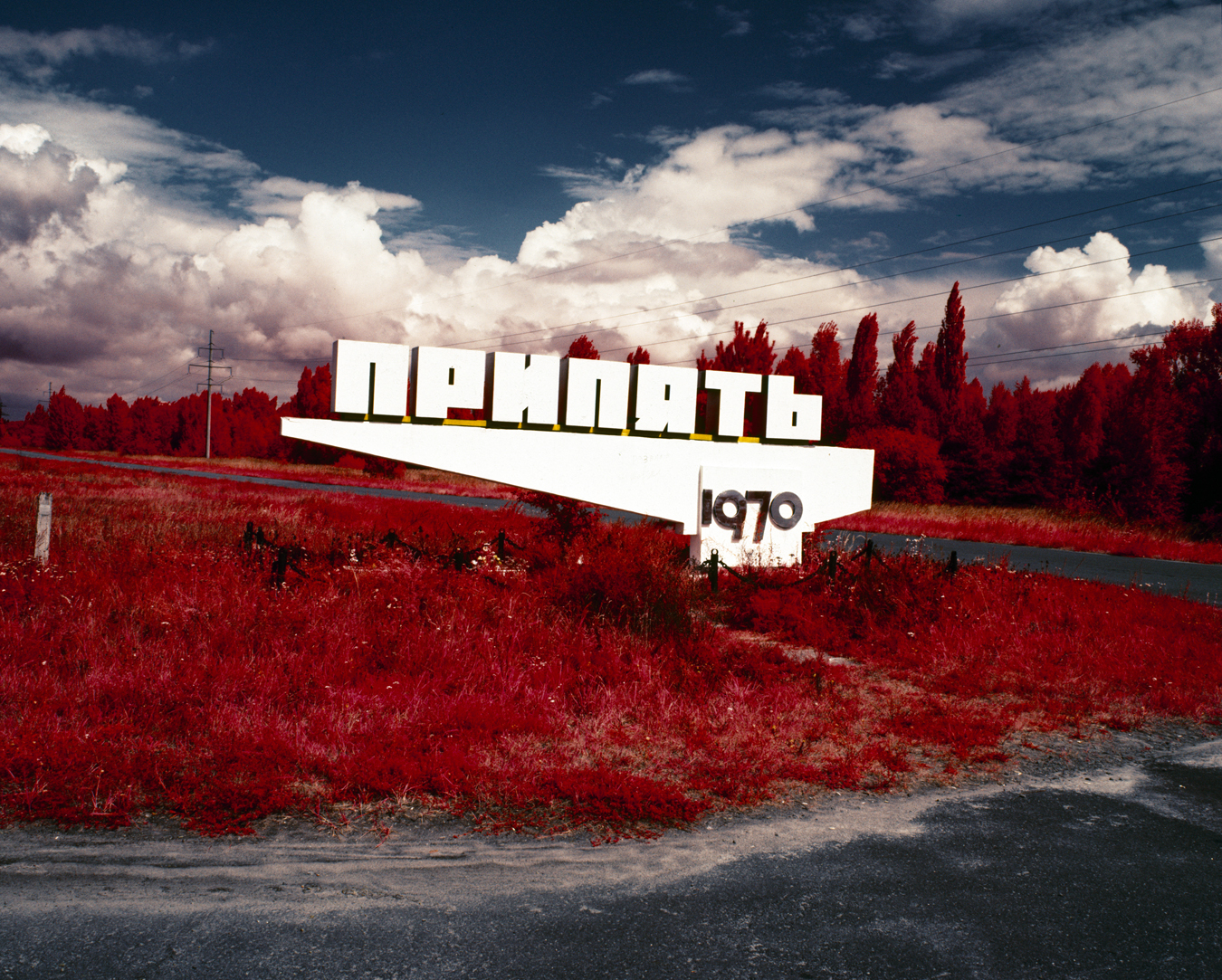
The Red Forest (2012) forms part of Thompson’s wider visual project which culminated in the book ‘The Unseen: An Atlas of Infrared Plates’. Together, the photographs in this photobook create an unsettling aesthetic. One of the most striking things about The Unseen is not so much the ability to ‘render the invisible visible’, but rather to render the ordinary strange. The upended visual pallet of the paprika and magenta hue has a feeling of Brechtian estrangement, making ordinary landscapes appear alien. The German playwright Bertolt Brecht wrote that the estrangement effect (Verfremdungseffekt) means: ‘stripping the event of its self-evident, familiar, obvious quality and creating a sense of astonishment and curiosity about them’. In Thompson’s work, where trees and plants are recast as a mass of red foliage, this estrangement effect is complete. This visual project also reminded me of the psychological experience of the uncanny, a concept developed by Sigmund Freud, where everyday objects or landscapes are encountered in eerie and unsettling contexts. As anthropologist Yohei Koyama has discussed a Toxic News article about Fukushima: radiated landscapes especially have this ‘anxiety-provoking’ and uncanny characteristic.
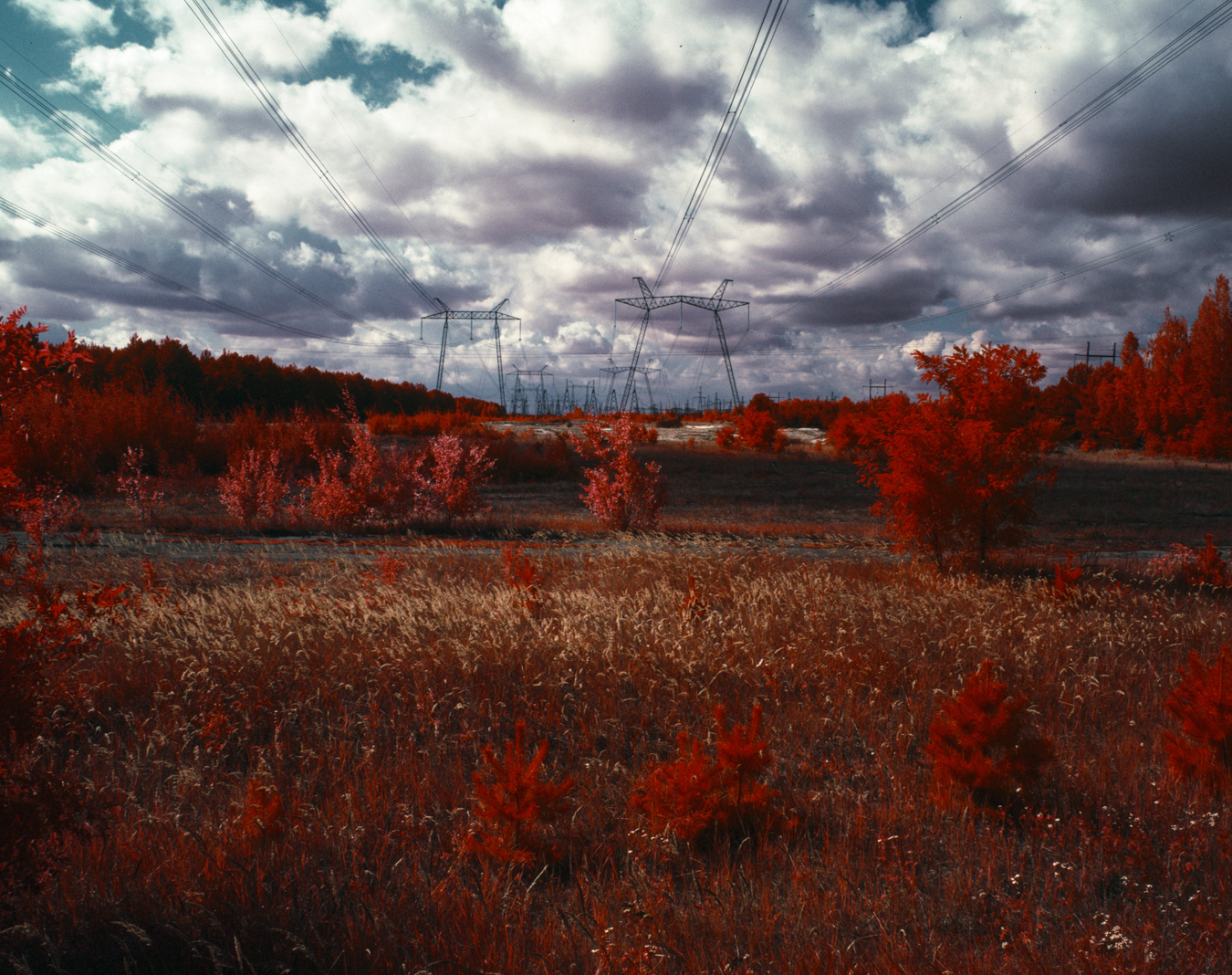
The Unseen, which was designed by Teun van der Heijden, tells a story about the environment that reaches beyond the spectre of nuclear pollution. It hints at other environmental threats such as climate change, through photographs of melting glacial ice caves which are turned a vibrant blue by the infrared film. Thompson documents overall-clad bee keepers at a time when the global bee population is under threat; imaged through the red glow of the infrared film, the beekeepers look like hazmat-suited survivors in a dystopian future.
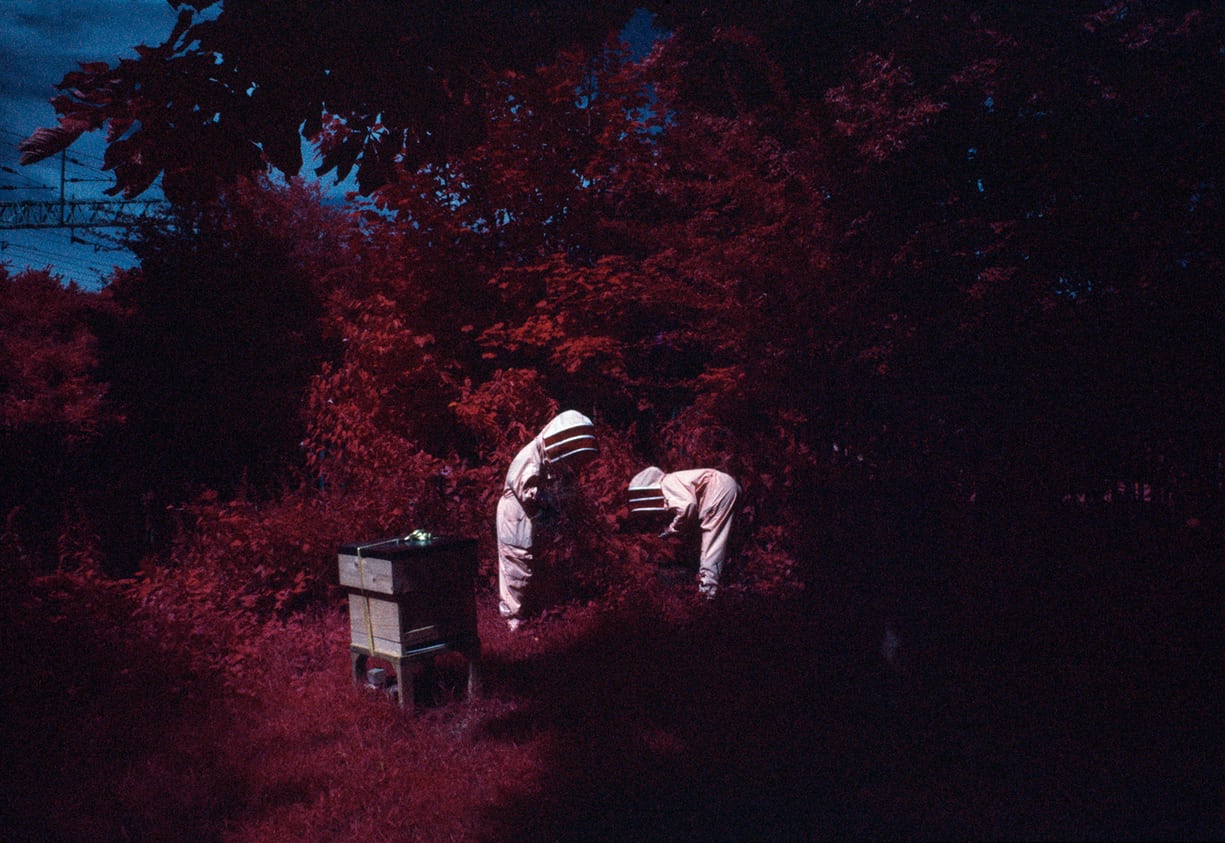
As Thompson has described, although his work has taken him to various geographic locations, ‘the real journey began through the research’. Much like the photobook ‘Monsanto: a photographic investigation’ by Matthew Asselin, and Susan Sontag’s call to ‘stand back and think’; creating The Unseen also involved a lot of academic investigation. Thompson explored the history of infrared film through original Kodak advertisements, library archives, and ‘forgotten experiments in antiquated scientific journals’.
“This project records a unique moment in photographic history”
Beyond the aesthetic of estrangement, the project is also an ode to this antiquated photographic technology. The entire book was shot with just 52 rolls of film: A film that was fast going out of stock. Like with Arthur Bondar’s striking work ‘Signatures of War’, which used outmoded polaroid photographs to document Ukraine’s last surviving WW2 veterans, Thompson’s work also records a unique moment in photographic history: the last swan song of a fading medium. As photography critic Darren Campion wrote, ‘Thompson’s unsettling, vaguely dystopian vision is the collision of that supposedly abandoned past with a world yet to come.’ With the photography world moving firmly towards digital technologies, this project documents not only precarious polluted environments, but a way of seeing that may never be seen again.
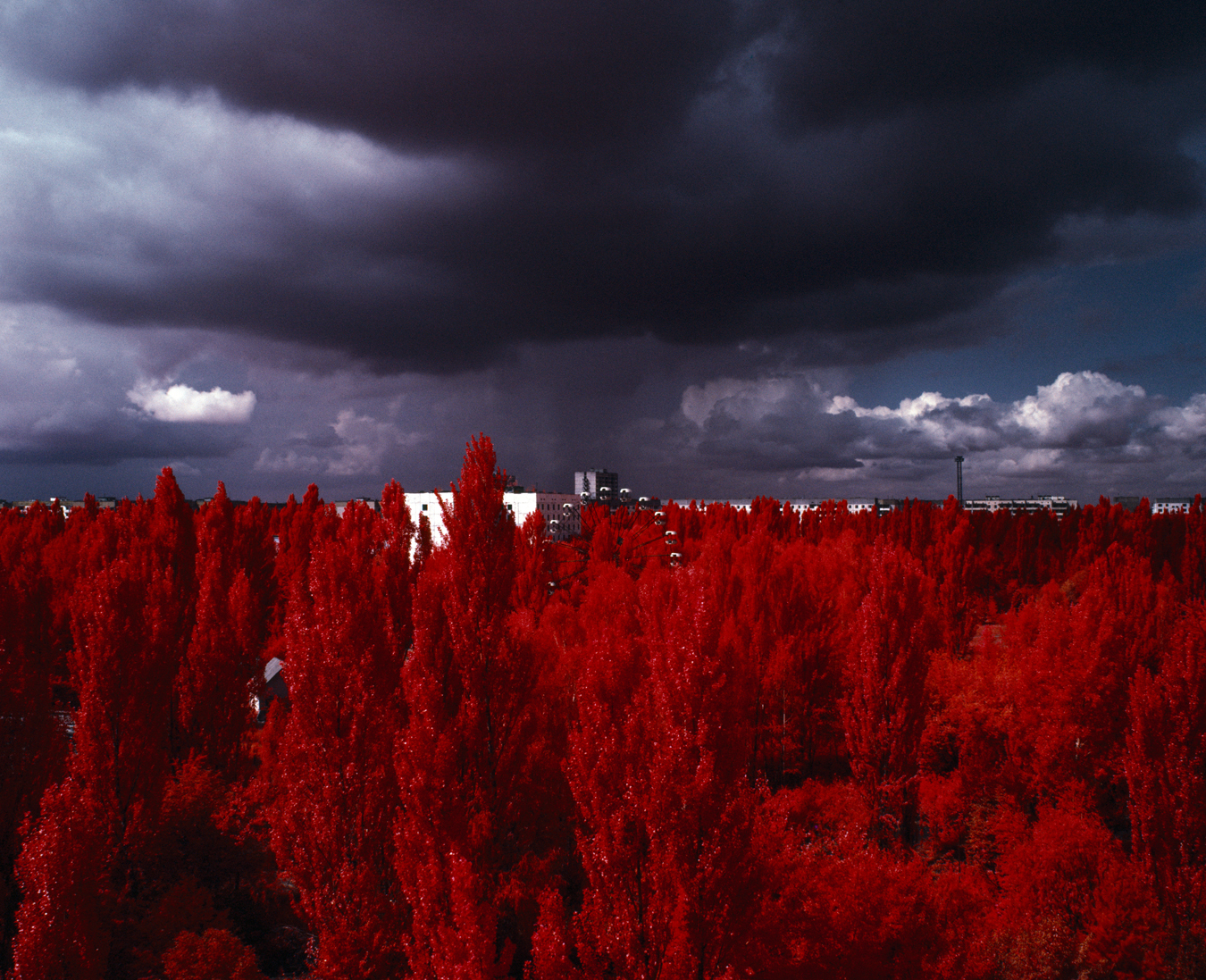
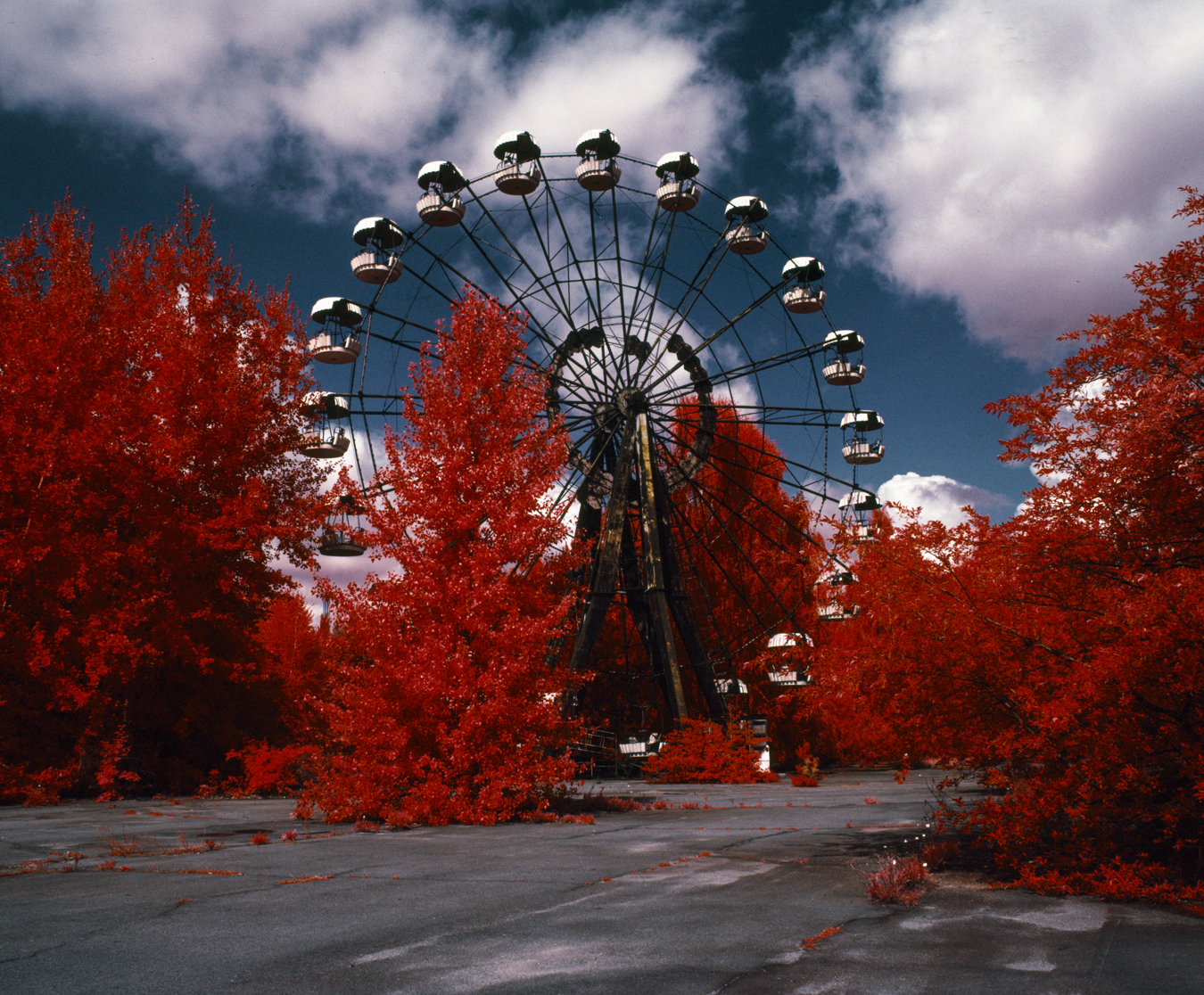
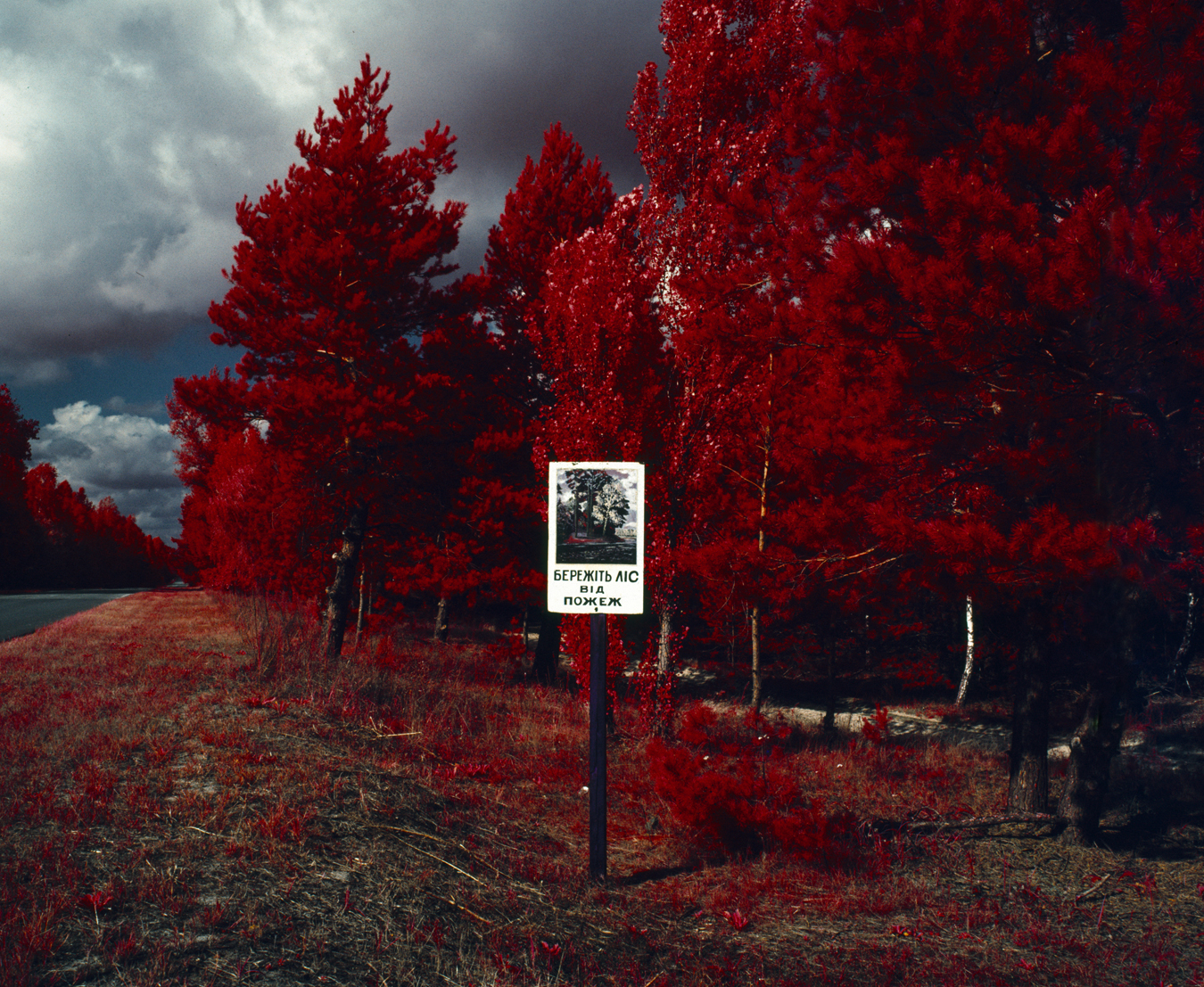
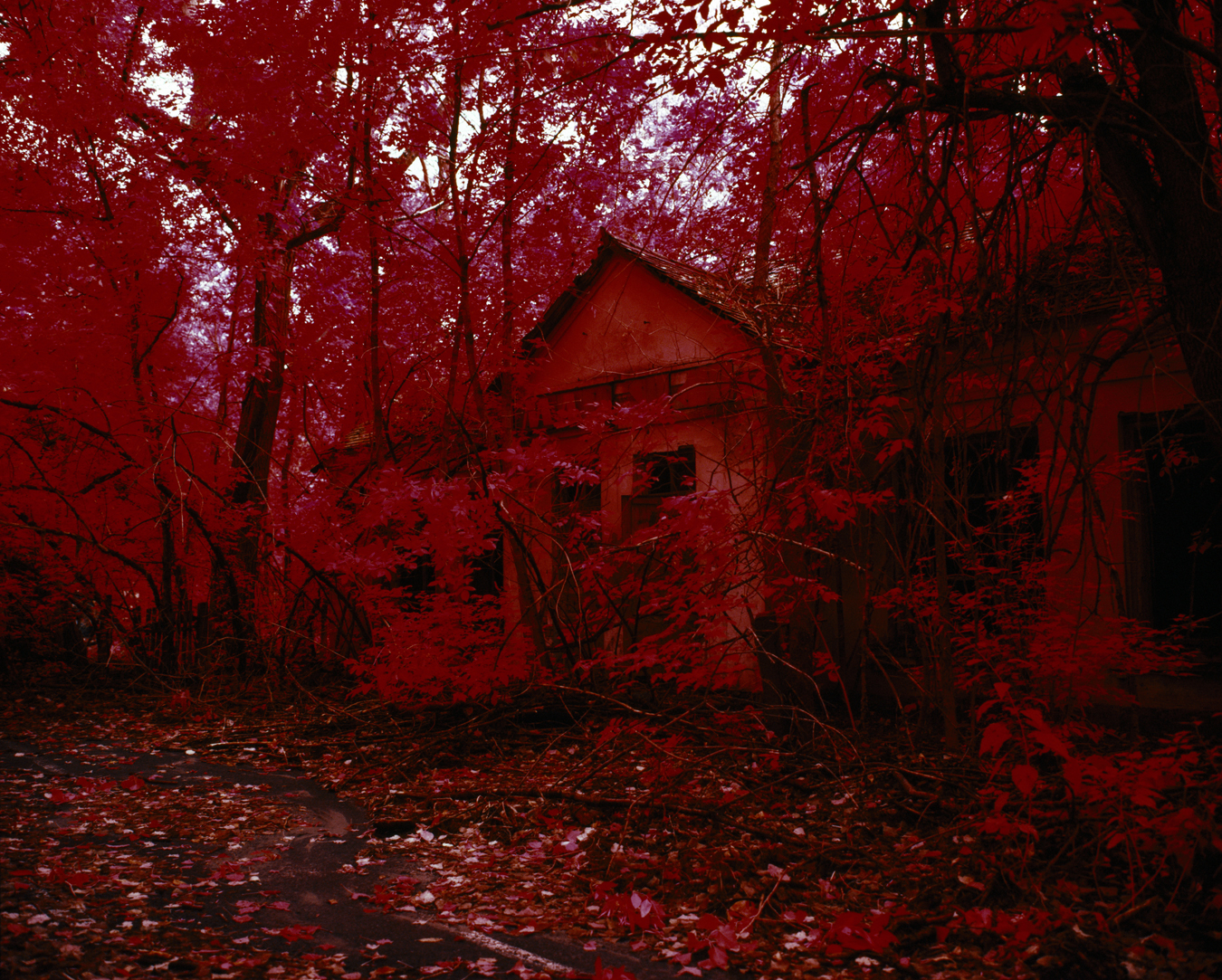
Many thanks to Edward Thompson for letting me use his images. You can buy a signed copy of ‘The Unseen: An Atlas of Infrared Plates’ here. Follow Edward Thompson on twitter here. And check out his website here.
If you are interested in academic research about Chernobyl and ‘nuclear geography’, you can read more about my work here, here and here.
Other articles in this Special Issue:
- Editorial: Toxic Visions – Photography and Pollution
- Exposing a Chemical Company
- Disposable Citizens: viewing Chernobyl through the lens of those live there
- The derelict afterlives of para-nuclear waste
- Rare Earthenware: photography, pottery, and pollution
- Graveyard of Giants: the Toxic Afterlives of Ships
- Treasure: Landscapes of the U.S. Strategic Petroleum Reserve
- Voyage on the planet: contemplating pollution with Chih Chiu
- Toxic Expertise Annual Workshop 2018
References
Brooker, P., 1994. Keywords in Brecht’s theory and practice of theatre. The Cambridge Companion to Brecht, 2, pp.209-24.
Bürkner, D., 2014. The Chernobyl landscape and the aesthetics of invisibility. Photography and Culture, 7(1), pp.21-39.
Davies, T., 2013. A visual geography of Chernobyl: Double exposure. International Labor and Working-Class History, 84, pp.116-139.
Freud, S. 1919. “The uncanny”. In S. Freud. 2003. The uncanny. Translated by D. McLintock. New York: Penguin Books
Petryna, A., 2013. Life exposed: biological citizens after Chernobyl. London: Princeton University Press.
Thompson, E., 2016. The Unseen: An Atlas of Infrared Plates. Amsterdam: Schilt Publishing
